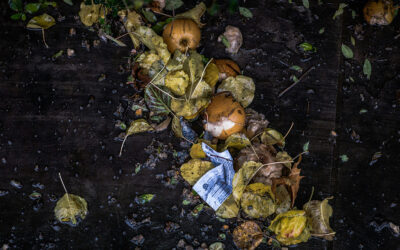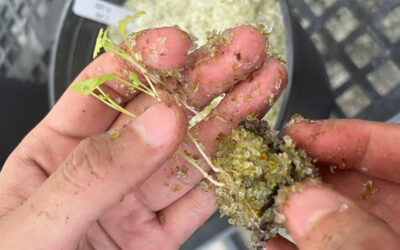Rare earth elements (REEs), find use in hundreds of modern conveniences, but their sources are geographically restricted. Increasingly, countries without access to deposits of these metals, are seeking to recycle and reuse them from sources such as wastewater. Recently, researchers reported that certain strains of bacteria can speedily capture rare earth elements from a water-based solution.
Rare earth elements (REE), a group of 17 similar metals, are found in minute concentrations in the Earth’s crust. “What makes rare earth elements special is their unique magnetic and optical properties, which make them important for a wide range of modern technologies,” said senior author Thomas Brück, a researcher at the Technical University of Munich, in Germany. With their versatile properties, these elements find myriad uses in hard disks, smartphone displays, for electric motors, wind turbines, superconductors, LEDs, lasers, camera lens, among other devices.
Since rare earth elements have similar chemical properties and are often found together, separation can be difficult, requiring laborious and often, toxic processes. Besides purifying these elements from their earth ores, it is also be possible to retrieve them from wastewaters drawn from mining or metallurgical processes or electronic waste. One way to do this is called “biosorption.”
Biosorption involves capturing substances in solution on the surface of a cellular biomass. The method has been well-studied in the context of wastewater remediation to separate chemicals, drugs and heavy metals. The ability of blue-green algae, or cyanobacteria, to adsorb metal ions on their cellular surface is a well-established example of biosorption. “Therefore, we investigated novel cyanobacterial strains that have not been part of extensive research and were part of our ongoing strain collection and discovery efforts to identify new potential biomass producers for biosorption materials,” said Brück.
The research team measured the ability of 12 strains of cyanobacteria to adsorb four different rare earth elements—lanthanum, cerium, neodymium and terbium. These cyanobacteria were isolated from a variety of environments, including terrestrial, freshwater and saltwater, across Africa, Europe and North America.
In a screening experiment, the team assessed the sorption ability of the cyanobacteria strains. They added the dried biomass of the strains to aqueous solutions of metals with known concentrations. The researchers compared the concentrations of metals before and after the addition of the bacteria to find out how much metal had been captured.
The researchers ranked the 12 cyanobacteria strains according to their metal adsorption ability for the four different metals. On the basis of these initial screening results, the researchers further characterized the adsorption capacities of the five most productive strains. “These cyanobacteria could be applied in future eco-friendly processes for simultaneous rare earth metal recovery and treatment of industrial wastewater,” said author Michael Paper.
Since wastewater contains many different metals and solutes, the researchers went on to test a more complex solution. They made a solution with a few different metals to see if any were favored for adsorption. For these experiments, the researchers tested the biosorption of cerium, since it is the most common rare earth metal, in a mixed solution with lead, nickel, zinc and aluminum.
The adsorption capacity of the selected cyanobacteria strains for cerium dropped when other metals were added into the mix. This suggested that the various metal ions were competing for the same spots on the cyanobacteria biomass. As metal concentrations rose, the biomass preferentially bound lead and aluminum, even replacing cerium at higher concentrations. Zinc and nickel were the least likely to bind to the biomass. But at low metal concentrations, the strains preferred cerium over lead or zinc. Notably, wastewater usually contains lower concentrations of metals and so, the ability of cyanobacteria to capture rare earth elements from diluted solutions would be particularly advantageous.
Previous studies have suggested that a process called ion exchange drives biosorption. During ion exchange, metal ions with stronger attraction for spots on the biomass replace other metal ions with weaker attraction for those same sites. When the team carried out metal analyses, they found that sodium, potassium, magnesium and calcium ions, present on the biomass and released by the bacteria, were preferentially exchanged for cerium, aluminum, lead, zinc and nickel.
Wastewater contains many different metals and may be acidic or basic depending on its composition. Earlier research has shown that the metal composition and pH value of the solution can influence metal uptake by cyanobacteria. Mirroring this, the research team found that the pH value of the solution also had a strong impact on adsorption capacity. Cerium was adsorbed optimally by the five selected strains at a pH value of 5, with a small drop at pH 6.
In analyses done with the help of a technique called infrared spectroscopy, the researchers noted that specific functional groups of atoms interacted with the metal ions. The presence of negatively charged functional groups, such as hydroxyl, carboxyl and carbonyl, aided in adsorbing positively charged metal ions.
While cerium is quite similar to the other rare earth elements, more studies are needed to establish if these findings can apply to them. Moreover, these laboratory-scale experiments need to be advanced to industrial levels and tested with actual wastewater samples from manufacturing sources.
Now, Brück’s team is developing a method to capture and collect the adsorbed rare earth elements from the biomass, making it available for reuse. “The demand for REE will rise dramatically in the near future. The European Commission listed REE as a critical resource with a high supply risk,” said Paper. “As the production of REE is limited with currently used methods, new sources have to be explored. The recovery of REE from wastewater using biosorption is a promising approach to secure future security of supply for REE.”
Reference: Michael Paper, et al., Rare earths stick to rare cyanobacteria: Future potential for bioremediation and recovery of rare earth elements, Frontiers in Bioengineering and Biotechnology (2023). DOI: https://doi.org/10.3389/fbioe.2023.1130939
Feature image by Jordan Whitfield on Unsplash

















